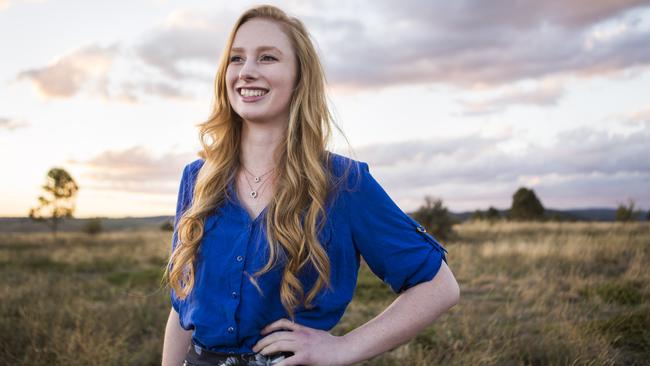Mobile pregnancy monitor offers help for rural women
A mouse-shaped wearable device might solve the tyranny of distance facing Australia’s rural women during pregnancy.

A mouse-shaped wearable device that constantly monitors a mother’s and baby’s heart rates might solve the tyranny of distance facing Australia’s rural women during pregnancy.
That tyranny can translate to inadequate healthcare and poor health outcomes.
Devised by RMIT University industrial design graduate Sarah Heimeier, it measures heart rate, blood pressure, blood sugar and a baby’s development, and even uterus contractions.
It will also detect certain health problems, such as gestational diabetes and pre-eclampsia, that can occur in a pregnancy.
Ms Heimeier said the device began as a student project in her final year. She realised its potential after doing a competitor analysis of what alternatives were in market. She found nothing especially tailored to rural woman.
“Right now I’m at the end of the concept stage,” she said. “The next step is to develop prototypes, conduct tests and gain accreditation as a medical device before going to production.”
The device contains a processor, transmitter and ultrasound transducer. The transducer produces sound waves which bounce off body tissues and sends their echoes to a computer.
Blood pressure and heart rate is measured by bouncing high-frequency sound waves off circulating red blood cells. Broad-band frequency is used to generate acoustic waves in the tissue to measure the mother’s glucose levels.
The transmitter generates short optical pulses, which are either high-frequency or broad-frequency, to send to the ultrasound transducer. Then the ultrasound transducer will send these pulses through the mother’s tissue layers.
Ms Heimeier said monitoring could be done at home and data could be sent to a mobile app that a doctor accessed remotely.
The 22-year-old designer, from Ballarat, Victoria, is among finalists in this year’s Hills Young Australian Design Awards to be announced on May 29.
Monash University entered a lightweight autonomous drone called the Phoenix UAV with infra-red sensors which can comb the skies and identify the warning signs of bushfire.
RMIT University also entered a child’s wheelchair called Spin Free that can be adjusted as children grow.
Another RMIT team entered a mini-bicycle designed for Melbourne called the Baltam, whose shape is inspired by that of a bantam chicken.
Monash University submitted a double-walled, single-person shelter that fits inside a one-litre water bottle, and the University of Wollongong entered a stylish iPhone/iPad charging station built to mimic the decor of a kitchen toaster.
The University of NSW entered a diving fin called ErgoFin that lets divers walk on land as well as swim.


